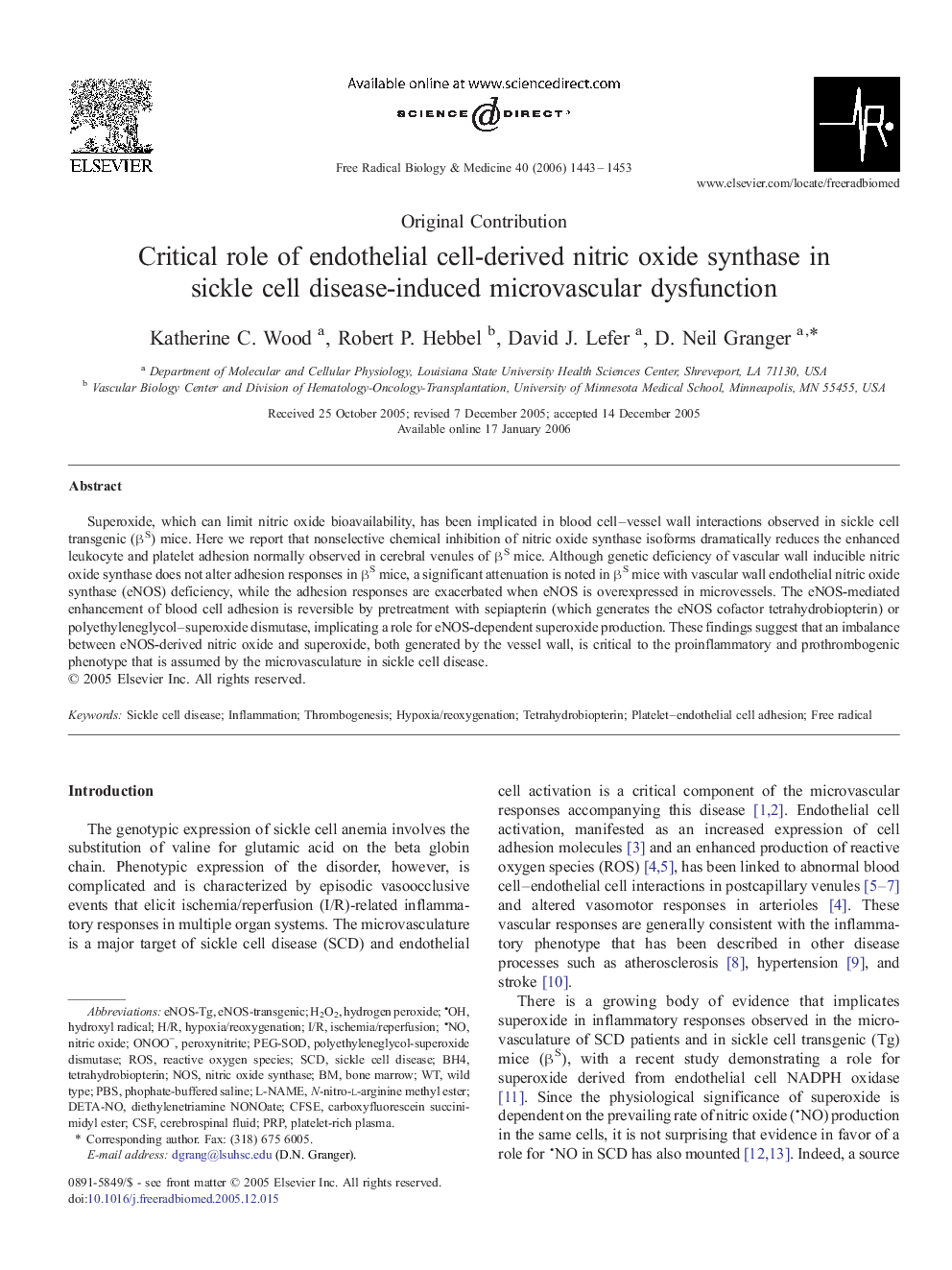| Article ID | Journal | Published Year | Pages | File Type |
|---|---|---|---|---|
| 1911591 | Free Radical Biology and Medicine | 2006 | 11 Pages |
Superoxide, which can limit nitric oxide bioavailability, has been implicated in blood cell–vessel wall interactions observed in sickle cell transgenic (βS) mice. Here we report that nonselective chemical inhibition of nitric oxide synthase isoforms dramatically reduces the enhanced leukocyte and platelet adhesion normally observed in cerebral venules of βS mice. Although genetic deficiency of vascular wall inducible nitric oxide synthase does not alter adhesion responses in βS mice, a significant attenuation is noted in βS mice with vascular wall endothelial nitric oxide synthase (eNOS) deficiency, while the adhesion responses are exacerbated when eNOS is overexpressed in microvessels. The eNOS-mediated enhancement of blood cell adhesion is reversible by pretreatment with sepiapterin (which generates the eNOS cofactor tetrahydrobiopterin) or polyethyleneglycol–superoxide dismutase, implicating a role for eNOS-dependent superoxide production. These findings suggest that an imbalance between eNOS-derived nitric oxide and superoxide, both generated by the vessel wall, is critical to the proinflammatory and prothrombogenic phenotype that is assumed by the microvasculature in sickle cell disease.
